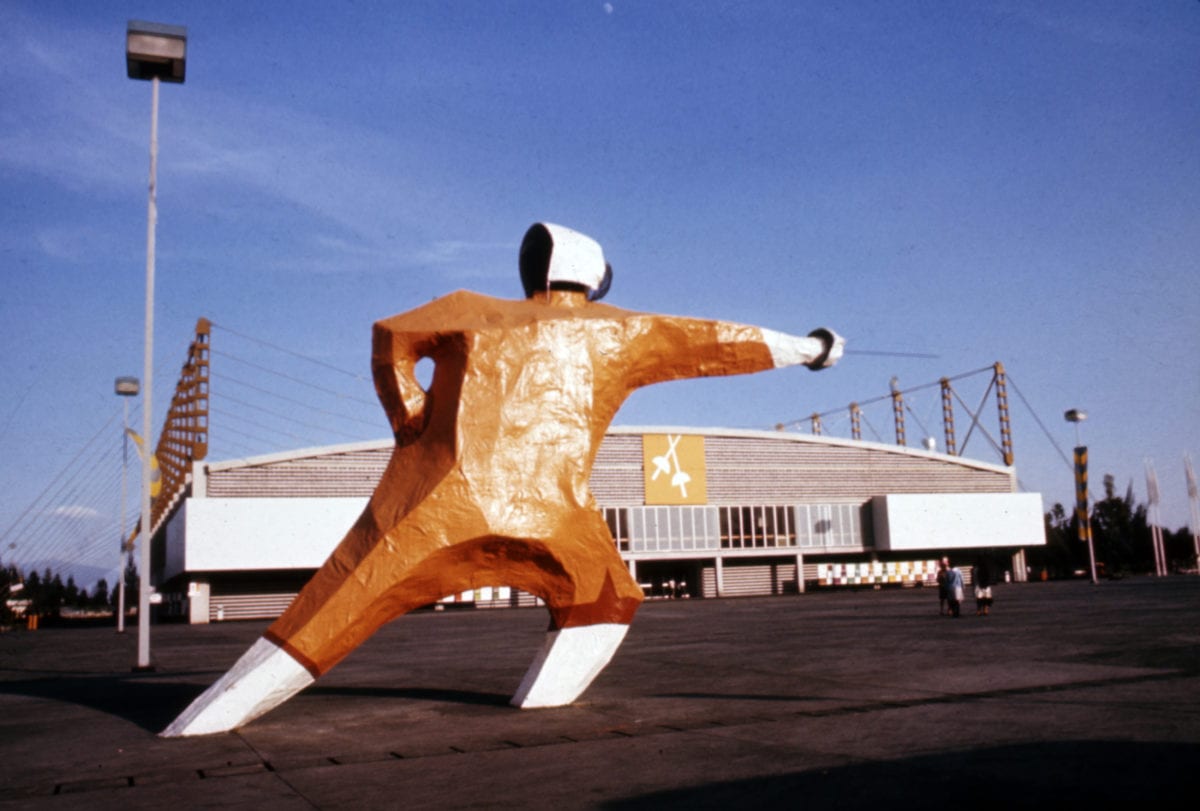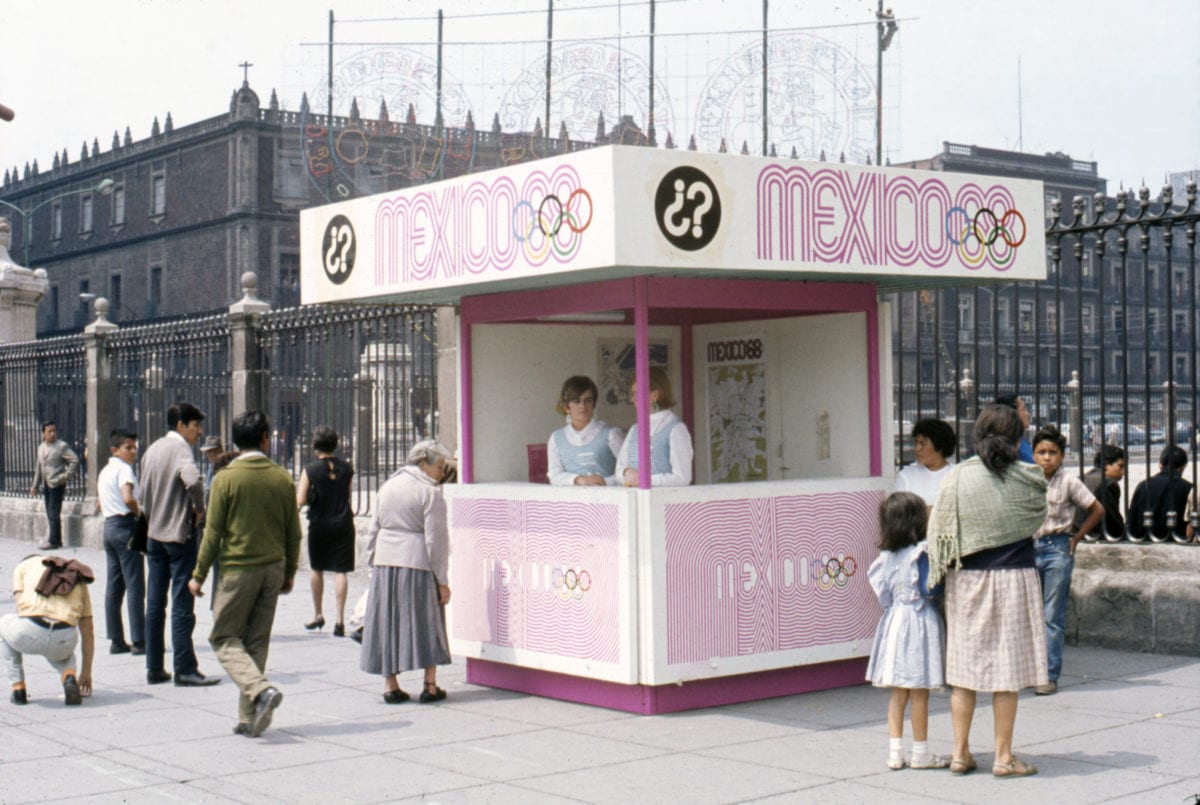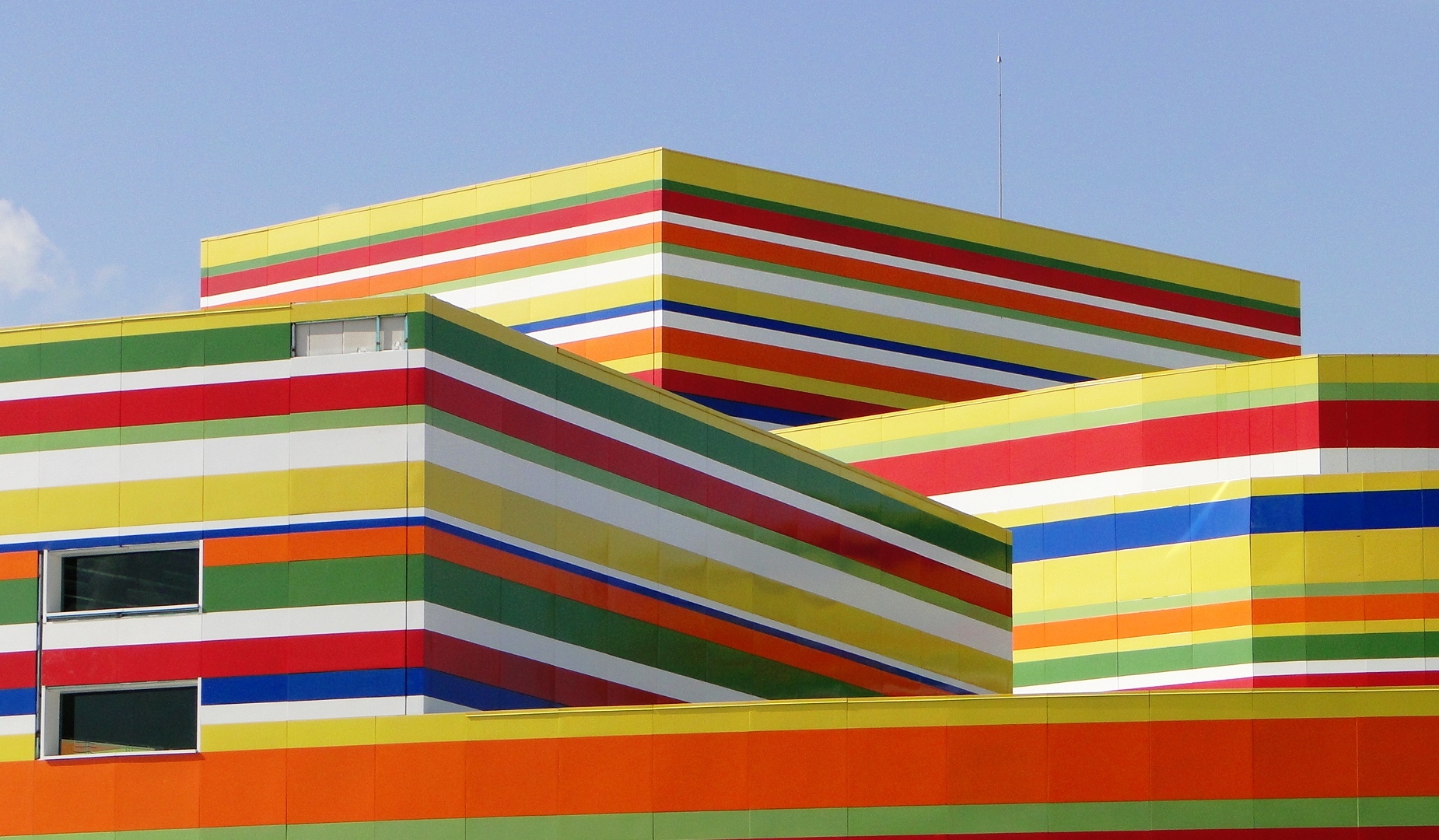
“I’m attracted to beauty and to harmony. I don’t like art that shows violence so much,” Eduardo Terrazas tells me when I visit his penthouse studio in the colonial Roma neighbourhood. This philosophy may partly explain why Terrazas’s art has been out of fashion for an extended period, given the prevalence of conceptual artists engaging with the endemic poverty- and drug-related violence in Mexico. But the publication of his monograph in 2012 prompted a flood of invitations to participate in shows around the globe and earlier this year his show at Timothy Taylor marked his first New York outing in more than thirty years.
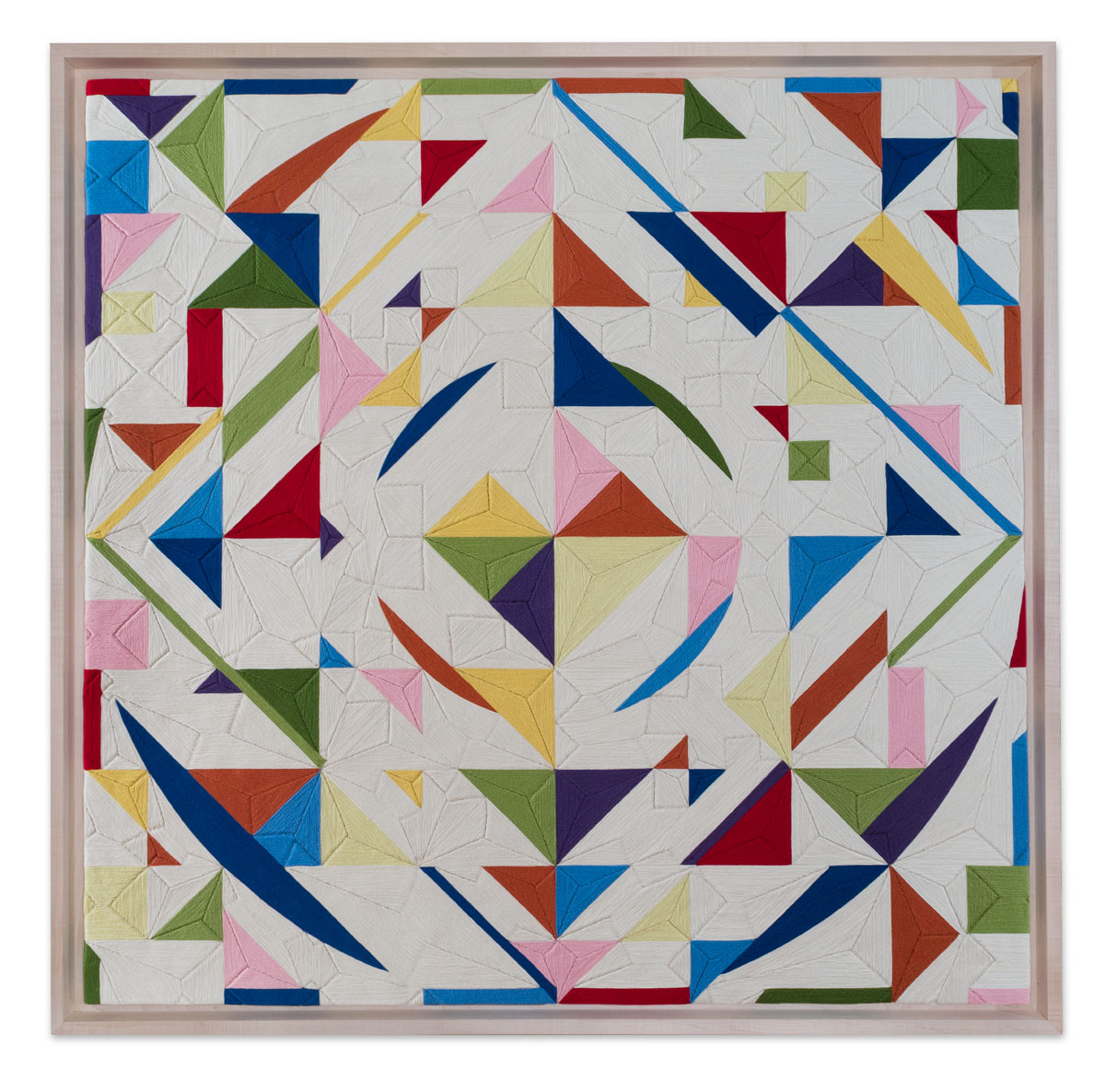
Terrazas was born in 1936 to an affluent family in Guadalajara, western Mexico. As a child he would spend hours on the veranda building forms from blocks of wood. This fascination with constructed forms would later translate into a career in architecture. He trained first in Mexico and then in the US, where he earned an MFA from Cornell University. A polymath, Terrazas has spread his energies over six decades between architecture, urban planning, graphic design and art.
Internationally, however, Terrazas is best known for his dazzlingly multicoloured geometric yarn wool paintings on wax board, based on a craft technique of the indigenous Huichol people in central-west Mexico. He developed an appreciation for folk art in 1961 when he was asked by the late museographer Fernando Gamboa to help stage the exhibition Masterpieces of Mexican Art at the Hermitage Museum in St Petersburg. “There was a big room full of artisans’ works, which at that time were just considered craft, and that for me was a total discovery. I fell in love with them,” he says.

On his return to Mexico, he co-designed the op art-aesthetic of the 1968 Mexico City Olympics—a charged event remembered abroad for the Black Power salutes of African American sprinters on the podium and at home for the government’s slaughter of demonstrating students days before. Terrazas’s eye-catching Olympic logo with its dizzying black and white concentric circles rippling outwards from the letters MEXICO and colourful Olympic rings interlinked with the numbers 68 was inspired by the gorgeous yarn panels of the Huichol people. Terrazas explains that upon examining the Huichol’s work closely, he noticed the yarn was pressed onto the wax-covered board in parallel lines. “I decided let’s add a parallel line on the inside and one on the outside of the 68, which made this geometric form, and then you follow the logic of it with the letters. It’s like constructing a building,” he says. “That’s what influenced all the Olympic things I did.”
“How can you make a cosmos that you can live within and make it yours?”
It was a pivotal moment for Terrazas. He began collaborating with the Huichol artist Santos Motoaopohua de la Torre de Santiago, and in 1972 presented the yarn paintings that would characterize his style in an exhibition at Mexico’s Palace of Fine Arts. Two years later he embarked on his most important series Possibilities of a Structure (1974–2015), based around a simple grid framework containing squares and circles. Terrazas has explored the formal relations of these elements in myriad permutations, which in theory are infinite. The use of yarn endows these modernist geometries with a striking warmth and tactility.
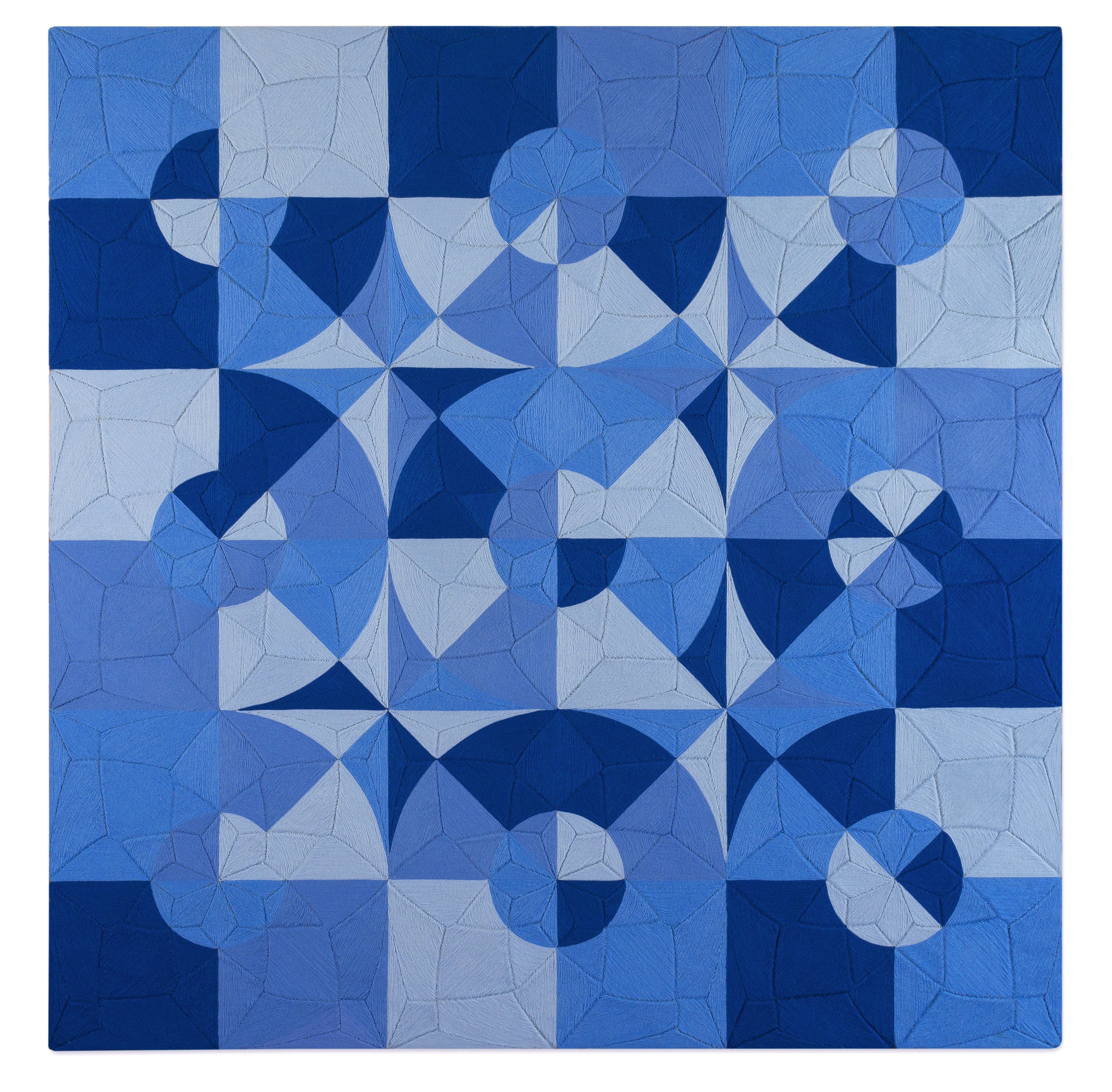
I ask Terrazas how the series originated. “How can you make a cosmos that you can live within and make it yours?” he replies. “To make it more understandable for me and to transmit it to my fellow human beings, I decided that a cosmos is a square.” With a pen he quickly sketches a square on a sheet of paper, then jots down a series of diagonal and horizontal lines between axes followed by a square within a circle. “At the end I put another circle in the centre which is the Earth. And then from this,” he shades some sections of the drawing, “I saw that little by little I can play with it and I continue playing, playing, playing, putting dots and colours.” His endless variations also derive from Mexican craft, he says. “Artisans cannot repeat the same thing. Each doll, each flute is totally different from the next one but made by the same person.”
His more complex variations call to mind Dante’s Circles of Hell. Terrazas distinguishes the cosmic elements of these abstract works from the belief system represented in Huichol yarn paintings, which feature recurrent symbols of peyote, corn and deer deities. “I use only their technique and their ability to express colours and connect their brain to their hands to their work,” he says.

“Do you want to come and see the work being made?” he asks, and ushers me into a small workshop where three women are busy gluing strands of yarn onto large wax boards imprinted with his trademark combinations of colours and geometric patterns. Terrazas never learnt the technique, surprisingly. It seems a meditative, if painstaking, process, taking about three weeks to complete one work. A cupboard is stacked floor to ceiling with yarn of every hue. “I get it all from Italy,” he whispers conspiratorially. “I did the research and it’s better quality there.”
The women’s handiwork lines the walls, along with pieces from another series suggestive of swirling galaxies in chaquira, another Huichol technique of embedding tiny beads into beeswax on board. “I was at the Pacific on the beach and suddenly I see the stars in the sky,” he says.

Terrazas has several bodies of such expressionistic works—Traces, Textures, Densities and Universes—that do not rely on geometric forms but are more fluid. Traces are works on paper inspired by scratches made by dust particles in the atmosphere hitting airplane outer windows. He began these in the seventies, alongside his grid structures. “Textures” was influenced by the consistency of the sand, the sky, the skin, plants.
“I saw that little by little I can play with it and I continue playing, playing, playing, putting dots and colours”
If he has had less visibility than subsequent generations of artists, Terrazas has nonetheless left his mark. An urban planning scheme he devised to ease traffic through axis routes across Mexico City has proven highly successful and he has built and designed several much loved regional cultural centres in Mexico. Other projects have included devising a publication for the Club of Rome thinktank and designing a new capital city for Tanzania, although these were never realized.
I wonder if he always imagined combining his passions for architecture, design and art. “I never imagined. It just happened. One day I got brushes and began painting.” All these disciplines carry “a tremendous social responsibility” for Terrazas: “You’re presenting to your society and to the global community a way of looking at the world.”
